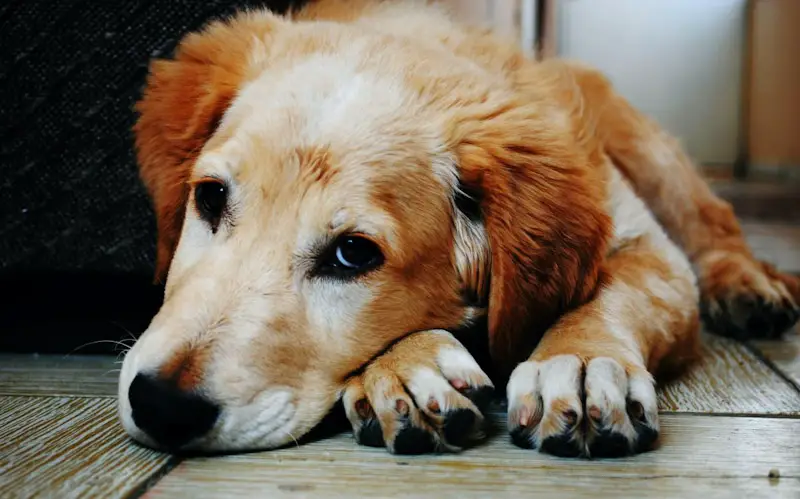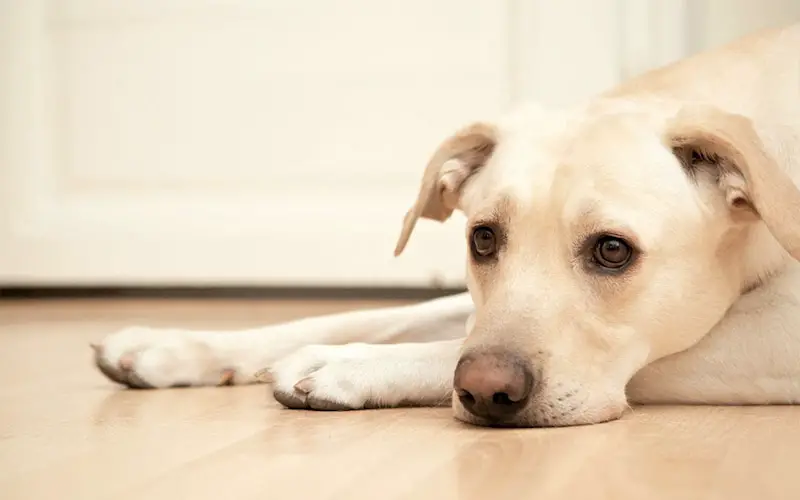If you have noticed a soft, fatty lump under your dog’s skin, you might be wondering what it is and how to deal with it. In most cases, these lumps are benign tumors called lipomas, which are composed of fat cells. They are usually harmless and do not cause any pain or discomfort to your dog. However, in some rare cases, they can grow large enough to interfere with your dog’s mobility, breathing, or organ function. In this article, we will explain what lipoma in dogs is, how to diagnose and treat it, and what natural remedies and care tips you can use to help your furry friend.

What is Lipoma in Dogs and What Causes It?
Lipoma is a common type of tumor that affects dogs, especially older, overweight, or inactive ones. It is not clear what causes lipoma, but some factors that may contribute to its development include genetics, hormonal imbalance, inflammation, and environmental toxins. Lipoma is usually benign, meaning it does not spread to other parts of the body or become cancerous. However, there is a rare form of lipoma called infiltrative lipoma, which can invade the surrounding tissues and cause complications.
How to Recognize the Symptoms of Lipoma in Dogs
The most obvious symptom of lipoma in dogs is a soft, round, or oval lump under the skin. The lump may vary in size, shape, and location, but it is usually found on the chest, abdomen, legs, or neck. The lump is typically movable and painless, unless it presses on a nerve or a blood vessel. Some dogs may have multiple lipomas, while others may have only one. Lipoma does not usually affect your dog’s appetite, energy, or behavior, unless it causes discomfort or impairs their function.
How to Diagnose Lipoma in Dogs
If you suspect your dog has a lipoma, you should take them to the vet for a proper diagnosis. The vet will examine the lump and perform a fine needle aspiration, which involves inserting a thin needle into the lump and extracting some cells for analysis. This procedure can confirm whether the lump is a lipoma or something else, such as a cyst, an abscess, or a malignant tumor. The vet may also perform other tests, such as blood work, x-rays, or ultrasound, to rule out any underlying conditions or complications.

How to Treat Lipoma in Dogs
The treatment for lipoma in dogs depends on the size, location, and type of the lump. In most cases, lipoma does not require any treatment, as it does not pose any threat to your dog’s health. However, if the lipoma is large, growing, or causing problems, the vet may recommend one of the following options:
- Surgery: This is the most effective way to remove the lipoma completely. However, it involves anesthesia, incision, and recovery time, which may not be suitable for older or sick dogs. Surgery may also leave a scar or cause infection or bleeding.
- Liposuction: This is a less invasive procedure that involves inserting a thin tube into the lipoma and sucking out the fat cells. However, it may not remove the entire lipoma, and it may recur or grow back. Liposuction may also cause bruising, swelling, or infection.
- Steroid injections: This is a simple procedure that involves injecting a steroid solution into the lipoma to shrink it. However, it may not work for all lipomas, and it may cause side effects, such as skin thinning, hair loss, or increased thirst and urination.
- Natural remedies: These are alternative methods that may help reduce the size or prevent the growth of lipoma. However, they are not scientifically proven, and they may not work for all dogs. Some examples of natural remedies include turmeric, apple cider vinegar, coconut oil, and flaxseed oil.
How to Care for Your Dog with Lipoma at Home
Besides the treatment options mentioned above, there are some things you can do at home to help your dog with lipoma. Here are some tips:
- Monitor the lipoma regularly and report any changes to your vet.
- Keep the lipoma clean and dry and avoid scratching or irritating it.
- Maintain a healthy weight for your dog and avoid overfeeding or giving them too many treats.
- Provide a balanced diet for your dog and include foods that are rich in omega-3 fatty acids, antioxidants, and fiber, such as fish, fruits, vegetables, and oats.
- Avoid foods that are high in fat, sugar, or preservatives, such as processed meats, dairy products, or canned foods.
- Exercise your dog regularly and keep them active and stimulated.
- Reduce your dog’s exposure to environmental toxins, such as pesticides, cleaning products, or cigarette smoke.
- Boost your dog’s immune system with supplements, such as vitamin C, vitamin E, or probiotics.

Conclusion
Lipoma in dogs is a common and usually benign condition that does not cause any serious problems. However, if the lipoma is large, growing, or causing discomfort, you should consult your vet for the best treatment option. You can also try some natural remedies and care tips to help your dog with lipoma. Remember, lipoma is not a life-threatening condition, and with proper care and attention, your dog can live a happy and healthy life.
